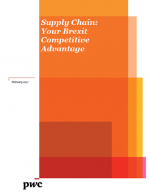Leveraging Allocations in an Omni World
Retailers today have multiple brands and multiple channels serving multiple demographics with multiple fulfillment models... additionally, customers are not static.
Customers’ lifestyles change - they move, they age, they take up new interests.
Retailers can’t count on lifetime loyalty or even that their store locations will continue to be a hub of commerce. Thus, their need for agility.
Retailers need to respond to ever-changing markets and customer tastes with more agile business models.
Agile retailers are moving away from the fixed locations, fixed seasonal models with fixed notions of style and size to more ever-fresh offerings and new brands that are responsive to specific locations and unique customer lifestyles.
The highly competitive fast fashion sector often has short product lifecycles and trends that quickly appear in stores to capture the transient tastes of teens.
Conversely, the venerable upscale brands evolve their designs over time, but take bigger risks with each collection. Yet their constraints are similar:
They need to manage a responsive merchandising cycle without amassing excess inventories, markdowns or lost sales due to stock-outs.
Rather than being all things to all people, agile retailers have learned not to diffuse their brands into less profitable segments.
This means focus! They may have identified new, profitable segments, so that means developing or acquiring a new brand to focus on that different customer.
They open new channels to capture channel preferences.
All these efforts - new chains, channels, and brands - introduce more complexity.
What’s Related




Favorites





